By Dan Weisz
Over the past week or so, I have visited some local parks. This collection of photos represents some of what I saw. As always, practically any Tucson area field will host at least one Vermilion Flycatcher.
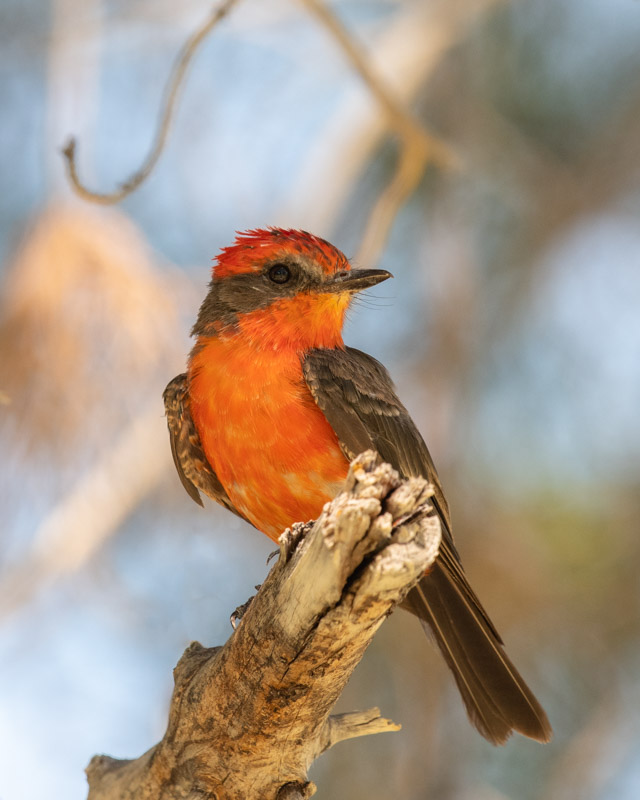
The word spread that there were Lazuli Buntings among a large flock of birds at Fort Lowell Park. Migration season has begun for these birds and they are more common in the Tucson area now. When I got to the Park, I could see the flock of birds on the field but they were very skittish and kept to the edges of the park, flushing if anyone even thought of approaching them. Among the House Finches and Lark Sparrows there were a number of Lazuli Buntings. I shot the bird below through a chain link fence in a baseball field. Lazuli Buntings have a sky-blue head and back.
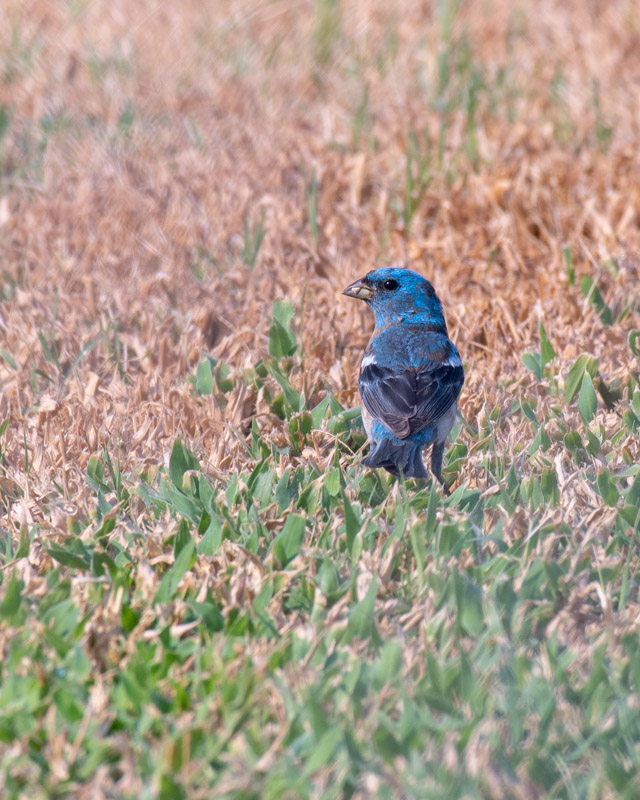
This range map gives you an idea of where Lazuli Buntings live and when they might be present in the Tucson area:
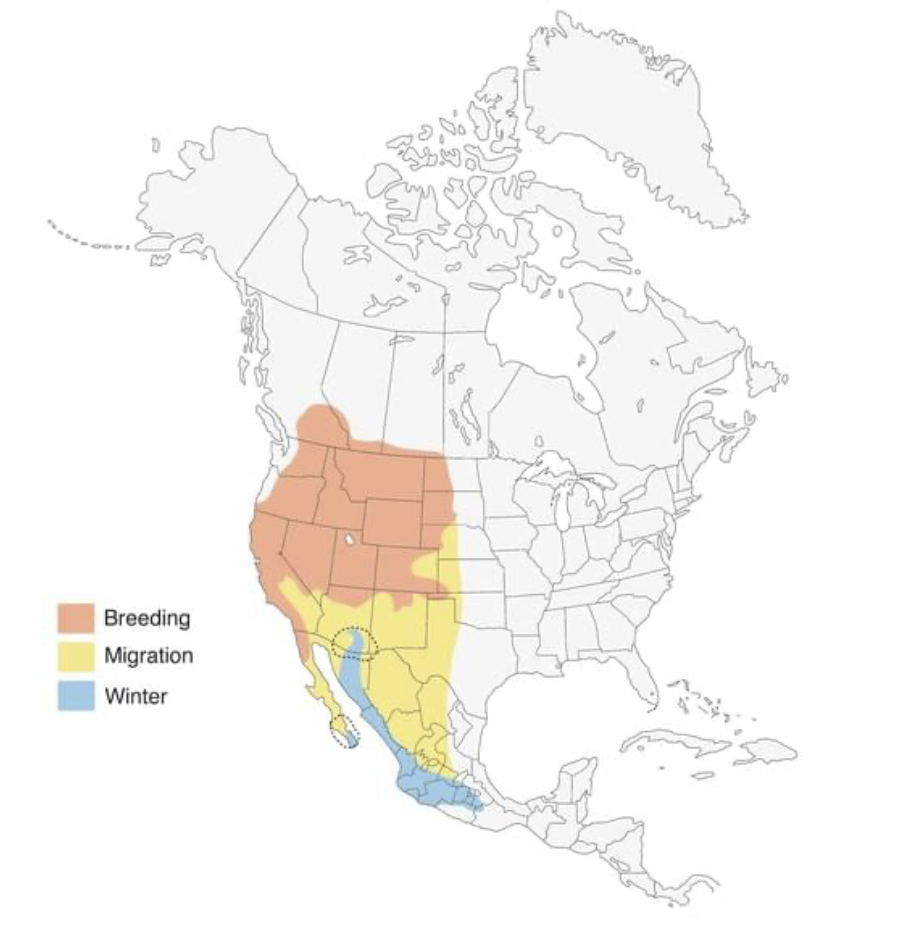
There wasn’t much to see on the pond at Fort Lowell Park but several Roseate Skimmers felt this twig was a perfect spot to briefly perch. Male Roseate Skimmers have a rose-pink and red abdomen.
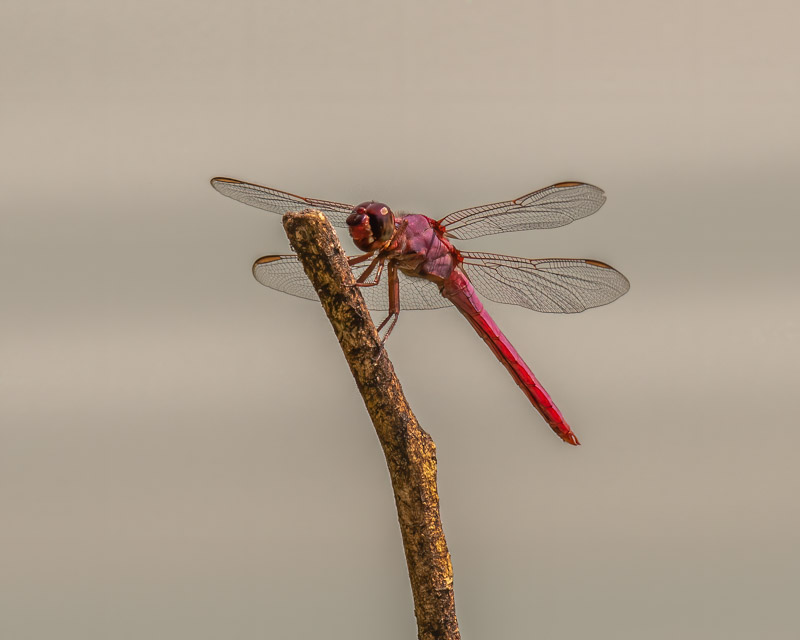
At a nearby park, an immature Cooper’s Hawk was drinking from the water on the ground. It stood ankle deep for a few minutes, looking around between drinks before flying off. Immature Cooper’s Hawks have brown backs, brown streaking on their white breasts, and a yellow eye.
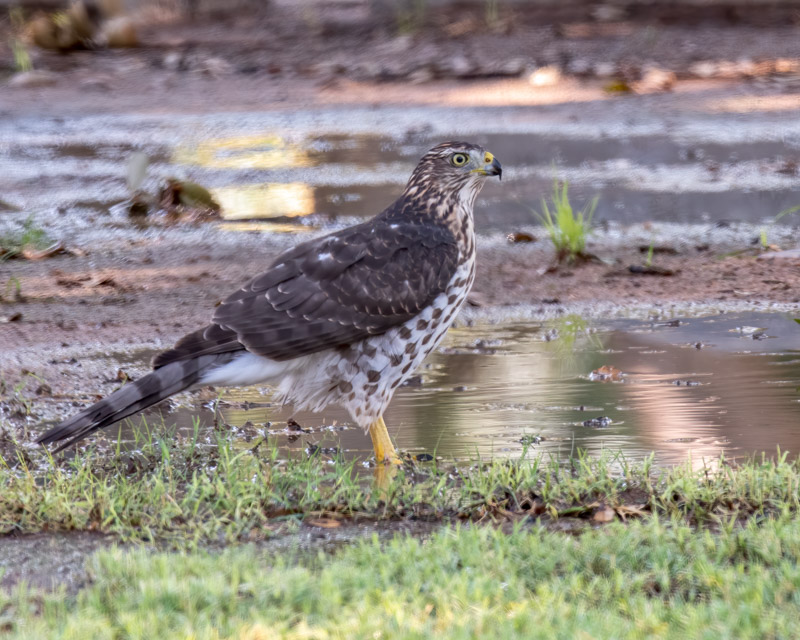
In a grassy area adjacent to the Randolph Golf Course, Lazuli Buntings were feeding in tall grasses. Although I saw a few colorful males, I was unable to get photos of them. There were several female or immature male birds feeding out in the open. They have the conical shaped beaks of the males, but a grayish/brown back.
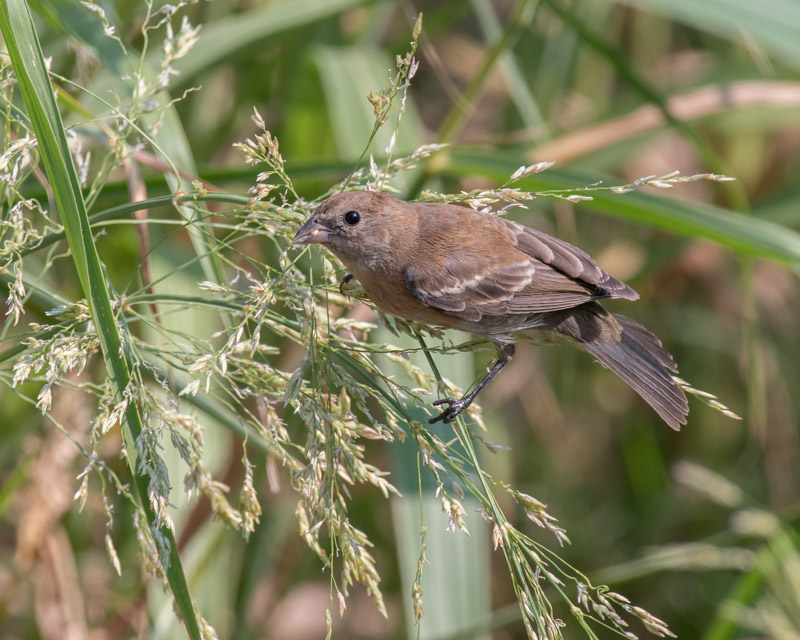
On this Lazuli Bunting you can see a hint of blue at the base of its tail. The Buntings teetered on the tall stalks of grass. Often when they landed, the grass stalks bent under the weight of this 5 ounce bird.
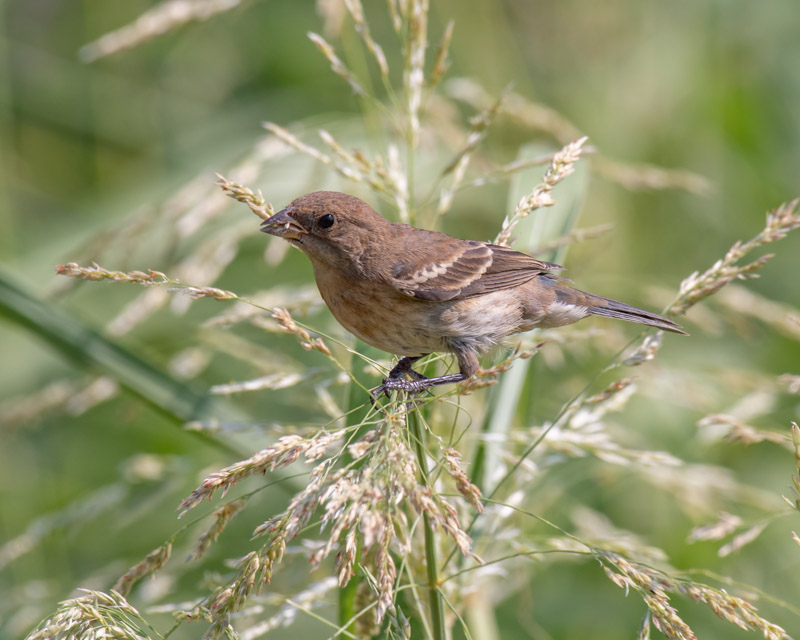
While I waited for buntings to pop up on top of the grasses, an urban coyote walked through the area, sniffing around and then moving on. The fencing is at the southern end of the driving range of the golf course.
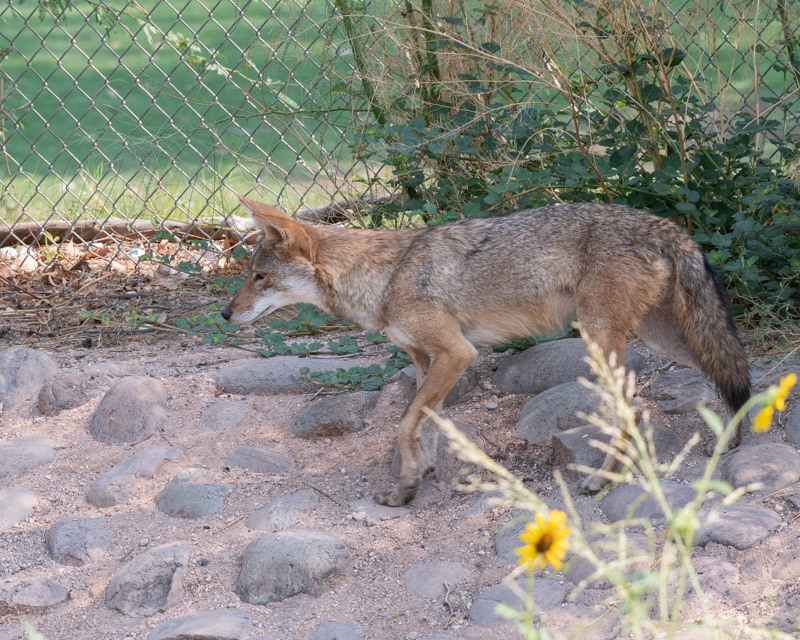
I returned to Fort Lowell Park a few days later. The large mixed flock of finches, sparrows and buntings was not there. I did see a large flock of Yellow-headed Blackbirds fly up into a large cottonwood. They remained there for 15 minutes before taking off and flying towards the west. Most of the birds were females or immature birds, brown rather than black and with yellow in their heads but not the bright yellow of the males. These birds are likely some of the early birds migrating here for the winter.
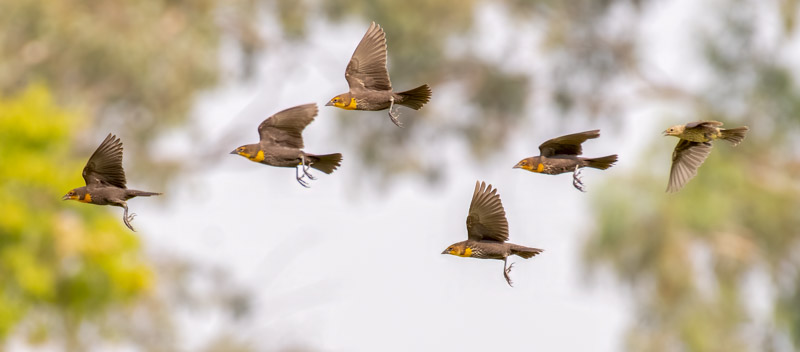
And even though there were very few birds in the fields, I did find a few male Lazuli Buntings. Finally I can show you the profile of a nice male. He has that sky-blue head, rump and tail, an orange-ish breast and white belly, and a noticeable white shoulder patch.
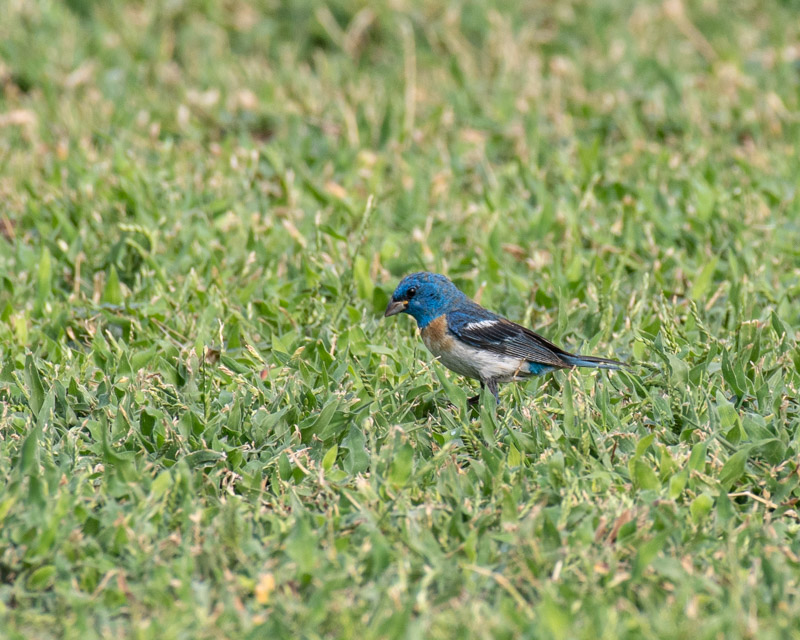
Here is another male with a female House Finch in the shot. The blue of the Lazuli is striking and the bird got its name from the gemstone lapis lazuli, a deep blue rock and semi-precious stone that has been prized for thousands of years. To hear some of the Lazuli Buntings’ songs, Birdnote has a presentation for you: https://www.birdnote.org/listen/shows/lazuli-bunting
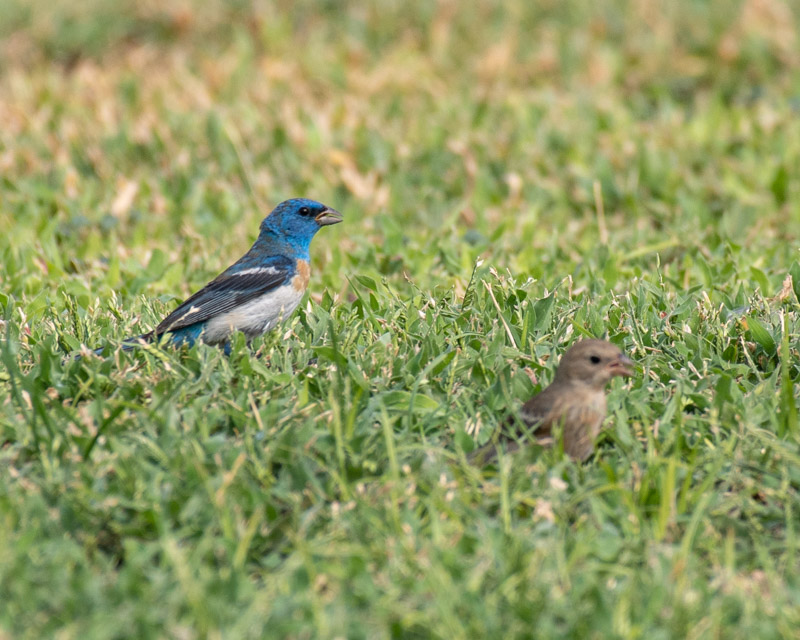
And, of course, Fort Lowell Park has its share of Vermilion Flycatchers too.
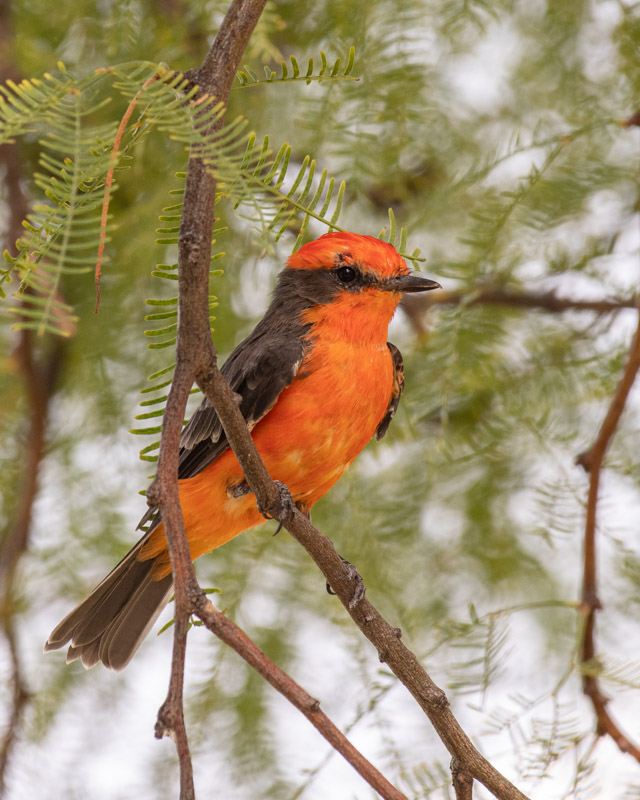
The red and blue birds add some nice color to our city.
